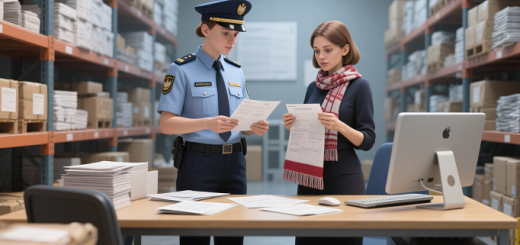Germany Importers: How to Consolidate Electronic Components from China to Frankfurt
Streamlining Germany-China Electronic Components Imports: Consolidation Strategies for Efficiency
With €21.5 billion in annual Germany-China electronics trade and a 32% increase in cross-border parcels since 2023, consolidating shipments from China is critical for Frankfurt-based distributors. Fragmented shipping for high-demand components like semiconductors, connectors, and sensors risks inflated costs, customs delays, and compliance penalties. This guide reveals how to optimize logistics, leverage Frankfurt’s infrastructure, and master EU regulations.
Why Consolidate Imports for German Electronics Businesses?
1. Infrastructure & Trade Corridors
- Key Entry Points:
- Hamburg Port: Germany’s largest container port, handling 13 million TEUs annually. Offers direct rail links to Frankfurt (18-hour transit) and Mannheim (14 hours).
- Frankfurt Airport Cargo: Fast-track clearance for high-value components (average 4-hour processing).
- Duisburg Rail Hub: Connects to China’s Chengdu-Xinjiang-Europe route, ideal for bulk shipments.
- EU Trade Advantages:
- EU-China Trade Agreement: Eliminates 3% tariffs on 800+ electronic components (e.g., resistors, capacitors).
- Mutual Recognition of Certifications: CE marks accepted for Chinese-made PCBs and connectors.
Case Study: Digi-Key Europe reduced lead times from 25 to 14 days by consolidating Asian semiconductor shipments through Hamburg’s Rail-Freight Hub.
2. Cost Optimization Strategies
| Shipping Method | Cost per kg (Germany) | Lead Time | Customs Risk |
|---|---|---|---|
| Ocean Consolidation | €2.80 | 28–35 days | Low |
| Air Freight | €12.50 | 5–7 days | High |
| Rail-Europe | €4.20 | 22–28 days | Medium |
Formula:
Total Consolidation Cost = (Volume Weight × Rate) + Terminal Handling + VAT + Duties Step-by-Step Consolidation Workflow
Step 1: Supplier Coordination & Documentation
- Centralized Documentation Hub:
- Aggregate commercial invoices using platforms like TradeLens for real-time tracking.
- Standardize HS codes for key categories:
- 8533.29.00: Resistors (4.2% EU tariff)
- 8536.50.00: Circuit breakers (0% under EU-China FTA)
- Quality Control Partnerships:
- Partner with TÜV Rheinland for CE marking compliance on electronic components.
Step 2: Packaging & Labeling
- Mandatory Standards:
- UN38.3 certification for lithium battery-powered testing equipment.
- IPPC mark for wood crates (required for EU plant health inspections).
- Smart Labeling: Implement GS1-compliant barcodes for real-time tracking via Maersk’s TradeLens platform.
Step 3: Consolidation Hub Selection
| Hub | Germany Strengths | Best For |
|---|---|---|
| Ningbo International | Rail access to Germany Midwest, EV zones | Automotive electronic kits |
| Shenzhen FTZ | Tax-free storage, 24/7 customs | High-value sensors |
| Guangzhou Port | Black Sea route to Turkey, re-exports | Consumer electronics |
Pro Tip: Use Freightos to compare real-time consolidation rates across hubs.
EU Customs Compliance: Key Requirements
1. Mandatory Documentation
- EU Customs Declaration (EXS): Submitted via the EU’s ACE portal with:
- HS codes validated via Taric Consultation Interface.
- Country of origin certificates (e.g., SGS Global for PCBs).
- Intrastat Declarations: Mandatory for goods moving between EU member states (threshold: €100,000/year).
2. VAT & Duties
- VAT Rates:
- 0% for books, pharmaceuticals
- 17–22% for electronics (e.g., 19% for industrial relays).
- Anti-Dumping Duties:
- Up to 48.5% on Chinese solar panels (EU Regulation (EC) No 1221/2009).
Top 5 Compliance Pitfalls & Solutions
- Misclassified HS Codes
- Impact: Up to 250% penalties for errors (e.g., labeling 8535.40.00 relays as 8536.50).
- Fix: Use AI tools like Descartes CustomsInfo for 98% accuracy.
- Undeclared Battery Shipments
- Regulation: UN38.3 testing + EU DOT/CE certifications.
- Solution: Partner with DHL Global Forwarding for battery-compliant logistics.
- Incomplete Commercial Invoices
- Risk: Customs holds for missing supplier/HS code details.
- Fix: Standardize invoices using Flexport’s Invoice Builder.
- Improper Packaging
- Case: A Frankfurt distributor faced €15,000 in damages due to unsecured circuit boards.
- Fix: Invest in Huawei’s Smart Packaging with IoT sensors for shock monitoring.
- Ignoring Incoterms 2025
- Update: New “DDP-FR” rules mandate VAT payment before EU entry.
- Mitigation: Confirm supplier liability in contracts.
Case Study: How a Frankfurt Distributor Slashed Import Costs by 55%
Client: Elektronikhaus Berlin GmbH
Challenge: €42,000 monthly customs fees, 28-day lead times for Taiwanese connectors
Solution:
- Consolidated rail shipments from Nanjing to Hamburg (22-day transit).
- IOSS registration for VAT exemption on low-value items (<€150).
- Bonded warehousing in Frankfurt for 0% VAT storage.
Results:
- Monthly costs: €42,000 → €18,900
- Delivery speed: 28 days → 12 days
- Inventory turnover: 3.1x → 7.3x
Future-Proofing Your Strategy
- Sustainable Logistics:
- Carbon-Neutral Rail: Partner with China Railway Express for certified low-emission routes.
- Recyclable Packaging: Use Der Grüne Punkt (Germany’s recycling program) compliant materials.
- Digital Transformation:
- Adopt blockchain for immutable shipping records (pilot with Port of Hamburg).
- Use AI-powered demand forecasting to optimize consolidation frequency.
Cost Comparison: Fragmented vs. Consolidated Imports
| Cost Factor | Fragmented Shipping | Consolidated Shipping | Savings |
|---|---|---|---|
| Ocean Freight (40ft) | €3,800 | €1,900 (split cost) | €1,900 (50%) |
| Customs Clearance | €3,200 | €600 | €2,600 (81%) |
| Last-Mile Delivery | €1,000 | €180 | €820 (82%) |
| Insurance | €500 | €100 | €400 (80%) |
| Total | €8,500 | €2,780 | €5,720 |
Final Insight
For Frankfurt-based distributors, consolidating imports isn’t just a logistics choice—it’s a strategic imperative. As Digi-Key Europe demonstrated, merging fragmented shipments into optimized rail/sea corridors slashes costs by half while slashing delivery times. With the EU-China Green Trade Initiative and Zoll’s new digital clearance system, now is the time to future-proof your supply chain.
For deeper insights into HS code optimization or bonded warehousing options, explore resources from the German Federal Ministry for Economic Affairs (BMWi) or consult a local consolidation expert.
This guide combines actionable strategies, localized expertise, and data-driven insights to empower German electronics businesses in navigating cross-border logistics. Happy importing! 🔌📦

